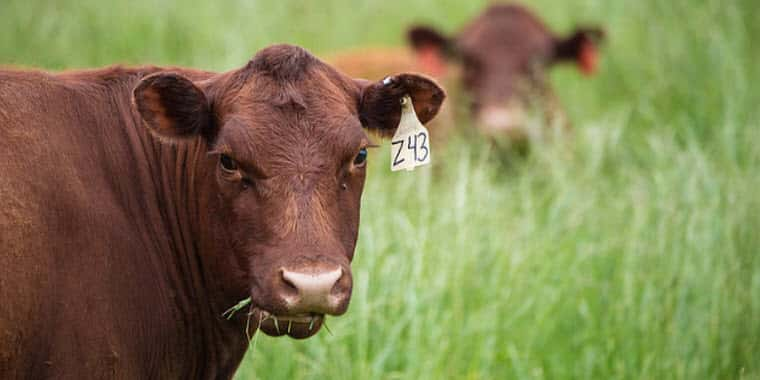North Dakota’s state veterinarian says the state’s first reported case of anthrax this year is a reminder to livestock producers to take action to protect their animals from the disease, especially in areas with a history of the disease. Anthrax was confirmed Tuesday in a beef cattle herd in Stark County by the North Dakota State University Veterinary Diagnostic Lab.
“This is the first case we have had in Stark County but have had cases in nearby counties in the past,” State Veterinarian Dr. Ethan Andress said. “Producers in past known affected areas and counties should consult with their veterinarians to review their risk factors and vaccination needs. If producers have unusual losses on pasture, they should reach out to their local veterinarian as they are experienced and trained for this type of response.” The state veterinarian’s office will coordinate with local and state resources to assist producers in dealing with disease situations.
Effective anthrax vaccines are readily available, but it may take more than a week for immunity to be established. Booster vaccinations must be administered annually for continued protection. Producers should monitor their herds for unexplained deaths and work with their veterinarian to ensure appropriate samples are collected and submitted to a diagnostic lab to give the best chance of obtaining a diagnosis.
“Anthrax has been most frequently reported in northeast, southeast and south-central North Dakota, but it has been found in almost every part of the state,” Agriculture Commissioner Doug Goehring said. “A few anthrax cases are reported in North Dakota almost every year. The animals impacted included cattle, bison, horses, sheep, llamas and farmed deer and elk.”
One case of anthrax was reported in North Dakota in 2024 in Adams County, but the year before there were 25 cases in Grant, Adams, and Hettinger Counties. The most widespread effects due to anthrax were seen in 2005, when more than 500 confirmed deaths from anthrax were reported in the Red River Valley and Sheyenne River Valley areas of the state, with total losses estimated at more than 1,000 head.
An anthrax factsheet is available on the North Dakota Department of Agriculture website at www.ndda.nd.gov/diseases/anthrax.
Anthrax is caused by the bacteria Bacillus anthracis. The bacterial spores can lie dormant in the ground for decades and become active under ideal conditions, such as heavy rainfall, flooding and drought. Animals are exposed to the disease when they graze or consume forage or water contaminated with the spores.
####
North Dakota Department of Agriculture – 2025


